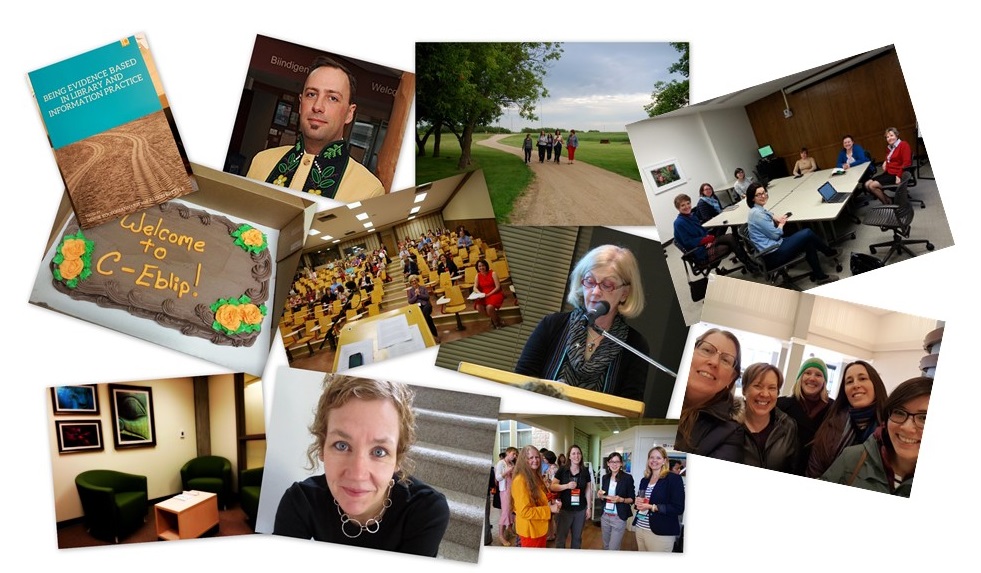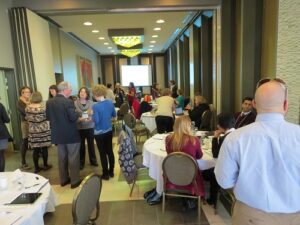By Craig Harkema, Karim Tharani, and Helen Power, University of Saskatchewan Library
Editor’s Note. Hello Everyone! I hope you are all well. We had planned a series of research conversations to be held in person at lunch to chat about research through the lifecycle. Times have changed! And we are adapting. My colleagues Karim Tharani and Craig Harkema were going to lead our conversation about their experiences applying for and getting grants. Our newest colleague, Helen Power, was to facilitate. When it became clear that meeting in person wouldn’t be possible, they all agreed to write a blog post. It is written by my colleagues as if we were holding the conversation we planned to have. Their voices intermingle and sometimes shared opinions are expressed. I hope you enjoy it and learn from their experiences. Catherine Boden, Director of C-EBLIP
Every grant has its own application requirements and scope, but there are also some strategies for success that suit any application. At this session, a panel of recent grant recipients within the library will discuss their approaches, challenges, tips, and experiences when applying for research grant funding. You will have the opportunity to ask questions, hear about resources available to librarians applying for grants, and discuss research and grant writing in a collegial setting.
Tip # 1: Think of the grant application process as a project
It may be helpful to think about your grant application as a project. With this mindset, it is easier to focus on the process of grant application rather than the research itself. It can be quite frustrating for applicants who get mixed up in the two. Remember, all that you are doing is presenting a research idea that is well-situated in the literature. The actual research work is expected to follow only if the application is successful.
Tip #2 Identify funding sources options
Universities encourage and support developing applications for Tri-Agency (refers to three Canadian funding agencies) grants. And our research facilitator does a great job of keeping us up to speed on timelines and what sort of projects the target. While SSHRC, NSERC, and CIHR grants are great sources of research funding, keep in mind there are many other grants available to librarian researchers. It’s fine to develop a project based on Tri-Agency grant criteria, but it can also be wise to hold out for funding opportunities that will support the type of research you have been contemplating for some time or have vested interest in. If you haven’t already, check out the Research Guide for Library Faculty libguide where Katya maintains a list of internal and external funding opportunities for librarians.
Tip # 2: Turn your research idea into a jargon-free research question
While it may be unsettling for some to disambiguate the grant application process from the actual research, it may bring comfort to know that there are a few similarities between writing a research paper and a research grant application. The most crucial similarity is a well-defined research question. There is no way around it! It doesn’t matter if you have convinced yourself that as a researcher-practitioner like you doesn’t need a research question. You still need to come up with a research question because your adjudicators will most probably be research faculty who are expecting a research question. Your grant application is not the place to engage in a debate over this.
Tip #2a Collaborations are good/bad
Depending on how early one gets involved, collaborating on a significant grant proposal can mean that the existing research objectives are already firmly established, perhaps with minor changes to accommodate co-applicant interests. Obviously this isn’t as ideal as contributing to the idea generation from the outset, but can still be interesting and exciting work that pushes you outside your normal comfort zone and introduces you to new areas. When discussing roles and responsibilities, it is important to be clear on what you want to do and how that contributes or aligns with your own research program. If the opportunity arises as a pre-tenured librarian, it makes sense to be very selective and prioritize work that gives you the opportunity for research outputs that will count toward tenure and promotion. Sometimes saying no is the best option — something pre-tenured librarians understandably have trouble doing. Whenever you’re approached with a grant collaboration opportunity, it is worth sitting down and prioritizing research obligations and opportunities before committing. Again, if you’re involved from the outset, this becomes less of an issue as you develop and refine the application and consider deeply the amount of time and energy you are willing and able to put in.
Tip # 3: Make use of your research facilitator
Having a research question ready will also make our University of Saskatchewan library research facilitator Katya extremely happy. There is nothing more soothing to Katya’s ears than the sound of a well-articulated research question! It will also help Katya guide you to the most appropriate internal or external grant options for your research idea. In most cases, you may end up applying for one of the locally administered SSHRC Explore and Exchange grants. These grants are Tri-Agency grants, even though they are adjudicated and awarded by the university. The forms are available on the Office of Vice President Research website, and Katya is also well-versed in getting us all going on this.
Tip # 4: Make use of rhetorical questions and metaphors
Most grant applications have similar sections such as purpose, context, methodology, significance, dissemination, etc. In my opinion, the best chance to convince adjudicators to support your research idea is in the first couple of paragraphs of the application. This is where your research idea must not only make sense but also must be engaging enough for the adjudicators to keep on reading your application. If you convince them to read further, the chances of them experiencing “congeniality bias” are heightened. Congeniality bias occurs when we end up looking for evidence to reinforce our own biases. It happens to us all the time. Say you are in the market for a new car. If you already have a vehicle in mind, then all you will see around you is your favourite car. That’s when you know you’re a victim of congeniality bias!
So how can you engage your adjudicators to be victims of the congeniality bias? Well, one trick that has worked for me is to ask a rhetorical question that conveys the essence and purpose of your research. The idea is to throw a thought-provoking question at your adjudicators that they would like you to answer for them! For example, when I applied for my first Tri-Agency grant, I wanted to develop an open (non-commercial) search engine for the web using Linked Data. The rhetorical question that I came up with was: Have you ever wondered why searching for a book using Google never leads you to a library? Another common tactic is use of metaphors. For instance, I used “ocean” and “magnet” as metaphors to get my research idea across. “Just as powerful magnets are used to recover metallic objects from the depths of oceans, this research proposes using credible “seed” citations … to attract new and relevant resources from the deep web using Linked Data.”
Tip # 5: Seek a senior decision-maker’s feedback on your application
You can also have your grant application reviewed by other faculty members through Research Services. I cannot stress the importance of using this service. Having constructive feedback from experienced peers made all the difference for me. It profoundly refined my approach to writing about my research idea and its impact. Another opportunity for you to get constructive feedback on our grant applications is when the proposal goes to the Dean for final approval. If you can convey the purpose and impact of your research idea in a way that excites the Dean, you know that your chances of convincing other decision makers (adjudicators) are much higher!
Tip #6 Take advantage of library located DRC support
Because we are library technology folks, we think it’s important to mention the services of the DRC. DRC staff can help with grant writing and provide in-kind support for projects that involve the use of computational methods for research activities. This can include digitization, space for student research assistants, website creation, metadata support, data modelling, digital asset management, etc. The staff can also give estimates on how long work might take and provide some project management support throughout the lifecycle of the project. Jon Bath, Co-Director, has extensive experience with SSHRC funded research and is available to review projects of this nature.
Tip #7 If at first you don’t succeed…
The odds are not in your favour when applying for grants. The most recent successful SSHRC application I was involved in was submitted in various forms 3 years in a row. It can be a grueling and disheartening journey, but one that can yield some pretty significant benefits down the road. In the very least, the application process helps clarify research objectives and develop a good narrative for your work. Or it can simply be an indicator that it is time to move onto something new.
This article gives views of the author(s) and not necessarily the views of the Centre for Evidence Based Library and Information Practice or the University Library, University of Saskatchewan.



 Jessie Loyer is Cree-Métis and a member of Michel First Nation. She is a liaison librarian at Mount Royal University in Calgary, a guest on Treaty 7 and Blackfoot territory. Her research looks at Indigenous perspectives on information literacy, supporting language revitalization, and creating ongoing research relationships using a nêhiyaw minâ otipêmisiw concept of kinship.
Jessie Loyer is Cree-Métis and a member of Michel First Nation. She is a liaison librarian at Mount Royal University in Calgary, a guest on Treaty 7 and Blackfoot territory. Her research looks at Indigenous perspectives on information literacy, supporting language revitalization, and creating ongoing research relationships using a nêhiyaw minâ otipêmisiw concept of kinship.